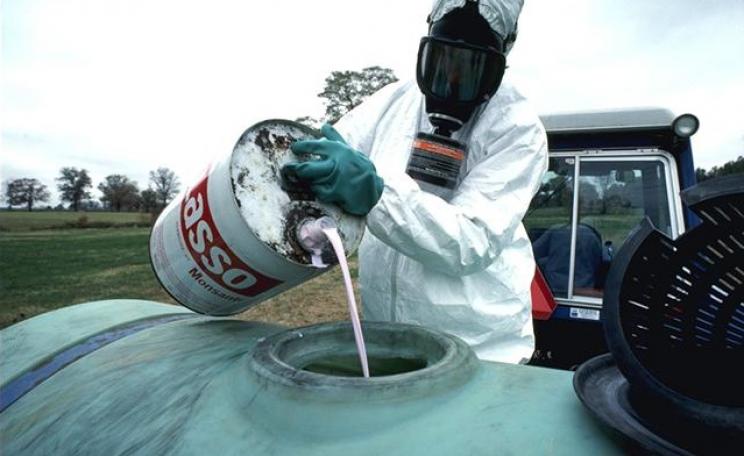As you enjoy (or recoil from) a festive smooch under the mistletoe this year, spare a thought for the other use of this seasonal plant.
More than just a decorative excuse for a cheeky kiss (a tradition which is a remnant of the plant's ancient association with fertility and good luck) or for sprucing up a Christmas wreath with its white berries and olive-coloured leaves, mistletoe could have an important role as an anti-cancer agent.
The history of using mistletoe as a medicinal plant goes back to ancient times, but it was mystic philosopher Rudolf Steiner (PhD) who, in the 1920s, first identified it as a species that could help with cancer treatment.
His 'science of the spirit' (anthroposophic) approach to medicine, which he developed with doctors, linked plant species to specific ailments.
Stem, leaves and berries
Steiner's suggestions for mistletoe treatments have been developed over the years and preparations derived from the European mistletoe (Viscum album L.) are among the most prescribed drugs in cancer patients in several European countries including Germany, Austria and Switzerland.
More than 50 per cent of cancer patients in Germany are given 'mistletoe therapy' during their treatment and it is often considered a part of the oncologist's repertoire.
In Germany, a total of eight different mistletoe preparations are available, five developed by Anthroposophic Medicine and three that have evolved from research into plant therapy (phytotherapy). All preparations are made with extracts from the stem, leaves and berries.
Amongst the most commonly used are Iscador (made by Weleda) and Abnobaviscum (made by Abnoba).
The preparations are most commonly taken by injection, but are also available in drops and in homeopathic form.
In the UK, mistletoe therapy is not so widely known or practised but, depending on where you live, it is possible to get it on the NHS.
Magic mistletoe
So how does it work? Proponents claim that mistletoe extracts stimulate the immune system, improve survival rates, enhance quality of life and reduce adverse effects of chemo- and radiotherapy in cancer patients.
'Mistletoe has unique properties,' says Dr Maurice Orange, a GP who has treated hundreds of patients with mistletoe therapy over the last 10 years. He works at Park Attwood, an anthroposophic clinic in Worcestershire where patients are drawn from all round the UK for mistletoe therapy.
'It has been shown in labs and with patients to both have anti-cancer properties and a powerful stimulating effect on the immune system. This is quite unusual,' he says. In some instances it can be used to have more effect on the tumour, in others it's used more to help the immune system.
This boost to the immune system and general health is particularly helpful for patients on chemotherapy, which kills the cancer cells at the expense of healthy tissues.
'A lot of modern treatments are damaging to health,' he says.
Dr Orange does not promote Mistletoe treatment as an 'alternative' to conventional medicine - as a conventionally trained GP he still considers surgery and other mainstream cancer treatments as relevant.
Quality of life
Mistletoe is mostly used alongside conventional treatments (chemotherapy, radiotherapy and hormone treatment) although some patients decide to use mistletoe alone. 'Occasionally tumours go into remission with mistletoe alone,' says Orange, 'but these are exceptions.'
He says it's hard to gauge the success rate as he sees such a diverse group of patients at different stages of their illness. His experience reflects the results of the studies that have been done: an improved quality of life for patients and fewer side effects than with conventional therapies.
The most advantageous time to start, says Dr Orange, is early, before conventional treatment begins.
‘Improved quality of life' is defined as improved energy, improved health (and confidence in their health), improved pain control, sleep and wellbeing, reduced fatigue, and fewer infections.
The only side effects are inflammation around the site of the injection and raised body temperature - both signs of immune response (which is seen as a positive reaction). All in all, pretty mild compared to chemotherapy. Harmful side effects are not known, except for occasional allergic reactions.
The science
What about the evidence? A July 2009 randomised controlled trial on mistletoe treatment in breast cancer revealed that patients treated with Iscador M showed a significantly higher score for quality of life. In particular, they suffered substantially less from pain, nausea, vomiting, fatigue, insomnia, appetite loss and diarrhoea compared to the control group.
Another recent study showed how mistletoe treatment can enhance immune responses in cancer patients.
There are over 120 clinical studies to date, according to the independent German website www.mistel-therapie.de, which focuses on mistletoe in cancer treatment. Dr Gunver S. Kienle, who works for Institute for Applied Epistemology and Medical Methodology in Freiburg, Germany, is responsible for the scientific information on the site.
She writes: ‘The results of the clinical studies predominantly report benefits to using mistletoe therapy. With regard to quality of studies and consistency of results, the best evidence concerning efficacy of mistletoe therapy exists for the improvement of quality of life and improved tolerability of chemotherapy, radiotherapy and surgery.'
Dependent on dosage
She continues: 'A benefit in survival time due to mistletoe treatment is possible, though this is dependent on dosage, duration, host tree and choice of preparation.' She says that tumour remission is ‘well substantiated' and that this finding is consistent with 'preclinical research regarding cytotoxicty and treatment of tumours in animals'.
However such remissions are 'dependent on dosage' and are 'rare exceptions with the customary low-dose mistletoe therapy'.
That said, not everyone is convinced. This year, the Cochrane review published its review of the evidence. The authors concluded:
‘The evidence from random control trials (RCT's) to support the view that the application of mistletoe extracts has impact on survival or leads to an improved quality to fight cancer or to withstand anticancer treatments is weak.'
Overall, it said, more high quality, independent clinical research is needed to truly assess the safety and effectiveness of mistletoe extracts.
Dr Orange is confident that there is 'enough evidence to show it's safe and to show it improves quality of life', but says for it to catch on in a big way in the UK there need to be trials conducted here (most have been done in Germany).
Word of mouth
Certainly, testimonials from for cancer patients who have received mistletoe therapy are encouraging.
Jane Greetham, a patient from Park Attwood, was diagnosed with breast cancer 12 years ago. 'I had just had a mastectomy and a friend in the bed opposite gave me a leaflet about mistletoe therapy.' She put it on hold for a while because of a fear of injecting herself (after the initial injections given by a nurse, you do it yourself at home).
Eight years later, she has been injecting herself with mistletoe extract twice a week. Was she sceptical at first?
'No. I'd heard such good reports from people who were actually on it. I was really looking forward to getting it into the system.'
She says it lessened the side effects of chemotherapy. Now she's been clear of cancer for 4 years but continues with the treatment - it gives her the sense that she's doing something to protect herself.
Her GP has been supportive, although her oncologist doesn't really believe in it.
‘But I do believe in it. The proof is in the pudding. I'm still here.'
She adds:
'Mistletoe therapy not very widely publicised in the UK. It needs to be. It's not just for kissing under.'
Finally, a word of warning: the plant and the berries are poisonous. Using mistletoe as a treatment entails expert, specialist knowledge. So, unless you're just kissing under it, don't try this at home.
Laura Sevier is the Ecologist's Green Living Editor
| READ MORE... | |
 |
GREEN LIVING Cancer and how to avoid it We all carry cancer cells, but we also possess natural defences. Laura Sevier meets Dr David Servan-Schreiber, author of 'Anticancer: A new way of life' to find out more |
 |
COMMENT What would a green health system look like? There seems to be chemical cures for every possible human condition - from obesity to shyness. What we really need are more healing hands, argues Molly Scott Cato |
 |
HOW TO MAKE A DIFFERENCE 10 groups campaigning for a healthier environment How can we be healthy on a sick planet? Especially when many still believe that health is unaffected by what is in the environment. These organisations could save your life |
 |
GREEN LIVING Grow your own drugs: an interview with James Wong Plants can be much more than a pretty backdrop to life. Read this and you'll never look at a garden in the same way again... |








